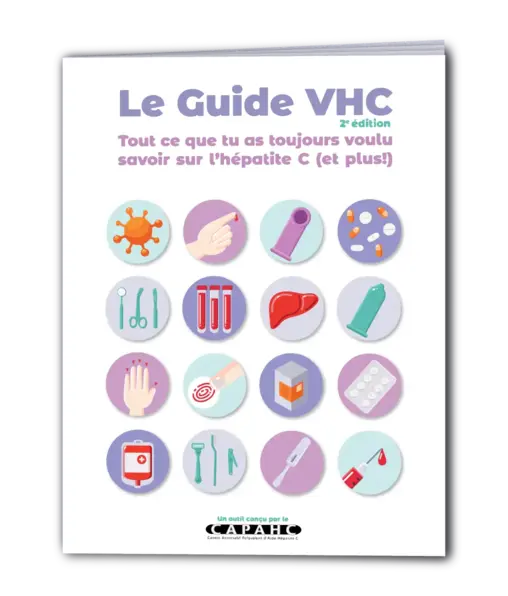Your reference for hepatitis C in Quebec
Liver condition assessment
Determining the stage of fibrosis is a key element in the prognosis of a person diagnosed with chronic hepatitis C. It can be performed using a variety of methods, both invasive and non-invasive (APRI and Fib-4 scores), and in particular enables the severity of the disease to be assessed. It should be noted that an invasive examination is a medical examination that requires a greater skin invasion than a simple venipuncture, for example an incision, surgery or the introduction of an instrument into the body.
The AST-to-Platelet Ratio Index (APRI) and Fibrosis-4 (Fib-4) scores are first-generation tests. They are calculated using simple mathematical formulas and indirect fibrosis markers obtained through routine assessment. They are free and widely available. Calculators are available online to facilitate calculation.
APRI
This score allows for the elimination of a cirrhosis diagnosis if it returns a result inferred to 1 and a predictive negative value of 91%. An APRI score superior to 1 with sensitivity at 76% and specificity at 72% maye provide a cirrhosis diagnosis. If the score is superior to 2 and the aspartate aminotransferase (AST) levels are also superior to the alanine transaminase (ALT) levels, there is a high probability of cirrhosis. For a moderate fibrosis (F2) diagnosis, this score’s performance is suboptimal.
Fib-4
To a high degree of certainty, this score enables the elimination of an advanced fibrosis or cirrhosis diagnosis if its result is inferior to 1.45 with a negative predictive value of 94.7% for F3 or F4. If the Fib-4 score is superior to 3.25, it has a predictive positive value ranging from 65% to 82% for F3 or F4.
Caution is warranted, however, because the score tends to provide false positives among subjects aged 60 and over, and it also tends to place about 30% of subjects in the ‘grey zone’ between 1.45 and 3.25.
The combination of both these scores reduces the need for using Fibroscan for a liver function assessment:
If :
- APRI<1 and FIB-4<1,45, no Fibroscan is required
- APRI>1 and/or FIB-4>1,45, Fibroscan is required for differentiating between a severe fibrosis and a cirrhosis.
According to the guide “La prise en charge et le traitement des personnes infectées par le virus de l’hépatite C,” we can take either the Fib-4 or the APRI score into account in a treatment context.
Other biochemical scores – 2nd generation
Second generation tests include Fibrotest®, FibroMètre® , ELF® and Hépascore®. They rely on direct fibrosis markers and are more effective (there is no ‘gray zone’). Unfortunately, however, most tests are patented by private companies and must be purchased. In Quebec, we can find Fibrotest® and Fibromètre® tests, but they are not very common.
Liver stiffness measurement
The measurement of liver stiffness, directly correlated to the degree of fibrosis in the liver, is another non-invasive method for determining the fibrosis stage.
Fibroscan®
The most well-known measurement tool for liver stiffness is Fibroscan®. It is painless, takes five minutes and must be conducted after at least two hours of fasting. It is not, however, recommended for people who are pregnant.

For hepatitis C, the diagnostic thresholds are:
- Significant fibrosis F2 median ≥ 7.1 kPa
- Severe fibrosis F3 median ≥ 10 kPa
- Cirrhosis F4 median ≥ 12.5 – 13 kPa
The Fibroscan® must be administered by a trained professional. Due to the high costs of the device, it is not widely available in Quebec.
It should be noted that, following a sustained virological response (SVR), liver stiffness can decrease and even return to normal levels, but this does not mean that the cirrhosis has disappeared. Following HCV treatment, the Fibroscan® does not provide further information on the state of the liver and screening for hepatocarcinoma is recommended.22

Other technologies
Other technologies for measuring liver stiffness include point shear-wave elastography (SWE) with acoustic radiation force impulse (ARFI) technology and also magnetic resonance elastography (MRE), which is currently in development.
In certain cases, a liver biopsy may be recommended. This invasive test is done in cases of unexplained inconsistencies between the APRI, Fib-4 and Fibroscan® scores, especially if a result could lead to a change in treatment.





